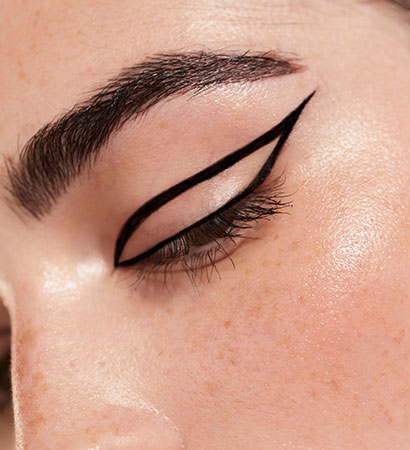The Science of Color: Understanding Organic vs. Inorganic PMU Pigments
When you delve into the world of permanent makeup, you’ll often hear artists talk about the quality of their "pigments." It’s a word that gets used a lot, but what does it actually mean? The pigment is the very soul of the procedure—the substance that creates the beautiful, long-lasting color in your skin. But not all pigments are created equal. The science behind them is a fascinating blend of chemistry and artistry, primarily revolving around two distinct categories: organic and inorganic.
Understanding the difference isn't just for industry nerds; it's empowering for you as a client. It helps you appreciate the level of expertise required to select the perfect color for your skin. So, let’s decode the science and discover why the choice between organic and inorganic pigments is a critical decision your artist makes for you.
The Bedrock of Stability: Inorganic Pigments
Inorganic pigments are what many consider the traditional foundation of permanent makeup. They are derived from natural minerals. Their primary component is typically Iron Oxide.
Think of the rich, earthy colors found in nature—the deep browns of soil, the warm reds of clay, and the soft yellows of ochre. These are the tones that inorganic pigments produce. Their characteristics include:
- Unmatched Stability: Iron oxides are incredibly stable molecules. They are highly resistant to fading from UV exposure, meaning they are very "lightfast." This is why they are a gold standard for procedures like eyebrows, where color stability over time is crucial.
- Muted, Earthy Tones: They excel at creating natural, muted shades of brown, red, and yellow, making them perfect for realistic-looking brows.
- Larger Molecule Size: Their larger particle size generally means the body is less likely to break them down, contributing to their longevity and low risk of migration.
- High Safety Profile: Iron oxides have a long and proven history of being safe for cosmetic use, with an extremely low incidence of allergic reactions.
The Spark of Vibrancy: Organic Pigments
This is where the name gets a little confusing. In this context, "organic" doesn't mean "all-natural" in the way we think about food. In chemistry, "organic" simply means that the molecule is carbon-based. These pigments are man-made in a lab to be pure and stable for cosmetic use.
Organic pigments are known for their brilliance and intensity. Think of the bright, vibrant colors of a fresh bouquet of flowers. Their characteristics include:
- Vibrant, Bright Colors: This is their superpower. Organic pigments can achieve a level of brightness and clarity that inorganics often cannot, making them perfect for creating vivid pinks, corals, and reds for lip blushing.
- A Wider Color Range: Because they are synthesized, they can be formulated to create an enormous spectrum of colors, including vibrant eyeliners and unique lip shades.
- Smaller Molecule Size: Their smaller particles can result in a more transparent, stain-like appearance, which is highly desirable for services like lip blushing.
- Tendency to Fade Faster: The trade-off for this vibrancy is that carbon-based molecules can be broken down more easily by UV radiation, meaning they may fade faster than inorganics if not protected from the sun.
The Modern Solution: The Art and Science of Hybrid Pigments
So, which one is better? The truth is, the "organic vs. inorganic" debate is largely a thing of the past for elite artists. The most advanced and reputable pigment manufacturers today create hybrid pigments. A hybrid is a sophisticated blend of both organic and inorganic components, formulated to capture the best qualities of each.
Think of a master artist mixing paints on a palette. By skillfully blending the two, a pigment formulator can create a color that has:
- The stability and longevity of an inorganic base.
- The brightness and vibrancy of an organic component.
This hybrid approach allows for the creation of rich, warm browns for brows that won't turn ashy, and beautiful rose tones for lips that have excellent staying power. This is the pinnacle of modern pigment science.
Why This Matters to You: Trusting Your Artist's Expertise
You don't need to be a chemist to get beautiful permanent makeup, but you do need an artist who understands this science inside and out. The choice of pigment is not arbitrary. A true professional selects a specific pigment or custom-blends a shade based on your skin type, your undertones, your desired outcome, and your lifestyle.
At PM Studio OK in Chicago, our commitment is to use only the highest quality, premium hybrid pigments from the world's most reputable brands. Our artists undergo rigorous and continuous training in advanced color theory. We understand how a pigment will heal and settle specifically within your skin. During your consultation, we can explain exactly why we are choosing a certain blend for you, ensuring a result that is not only beautiful on day one but also heals and ages gracefully over the years.
If you're in the Chicago, Illinois, area, we invite you for a consultation to experience this next level of expertise. Your face deserves nothing less than a masterpiece built on a foundation of science.



































